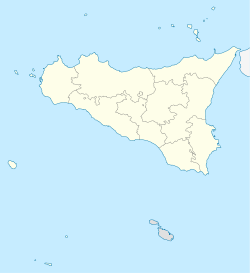You can help expand this article with text translated from the corresponding article in Italian. (March 2022)Click [show] for important translation instructions.
|
Caltavuturo | |
|---|---|
| Comune di Caltavuturo | |
| Coordinates: 37°49′N13°53′E / 37.817°N 13.883°E | |
| Country | Italy |
| Region | Sicily |
| Metropolitan city | Palermo (PA) |
| Government | |
| • Mayor | Domenico Giannopolo (since 14 June 2004) |
| Area | |
• Total | 97.2 km2 (37.5 sq mi) |
| Elevation | 635 m (2,083 ft) |
| Population (2004) [2] | |
• Total | 4,440 |
| • Density | 45.7/km2 (118/sq mi) |
| Demonym | Caltavuturesi |
| Time zone | UTC+1 (CET) |
| • Summer (DST) | UTC+2 (CEST) |
| Postal code | 90022 |
| Dialing code | 0921 |
| Patron saint | Maria Santissima del Soccorso |
| Website | Official website |
Caltavuturo (Sicilian: Caltavuturu) is a town and comune in the Metropolitan City of Palermo, Sicily, Italy. The neighboring comunes are Polizzi Generosa, Scillato and Sclafani Bagni.


